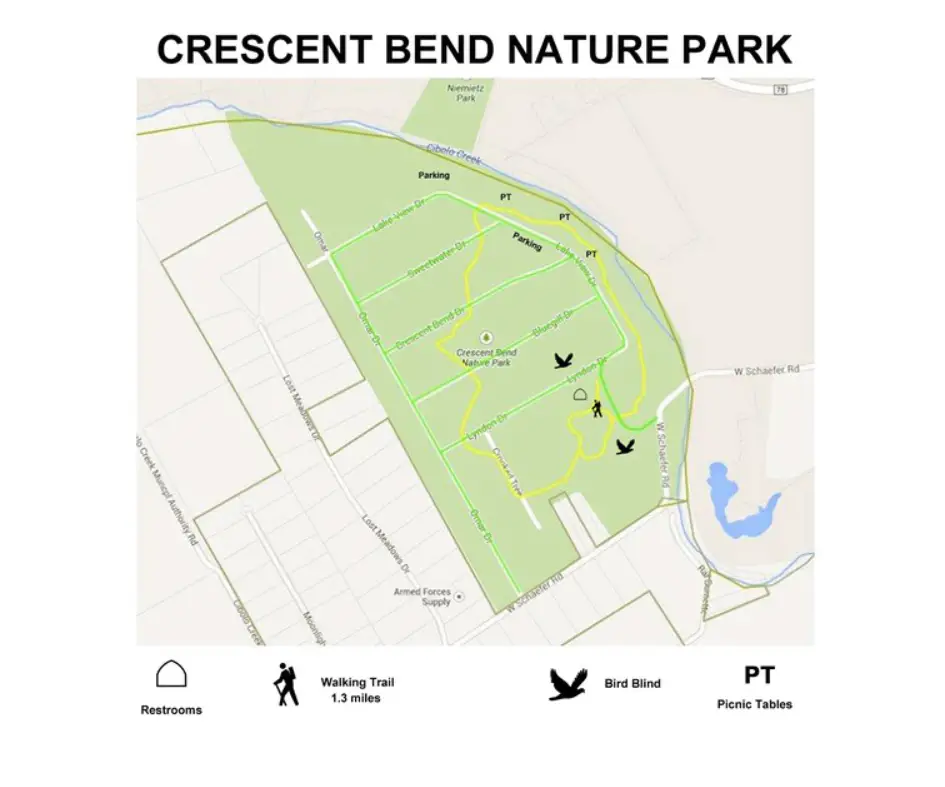Highlights:
- Mix of grassy shrubland, lowland hardwoods, and creek riparian habitat
- Two bird blinds
- Easy walking trails with restrooms and water fountains
Trail Length: 1.4 miles for the main trail
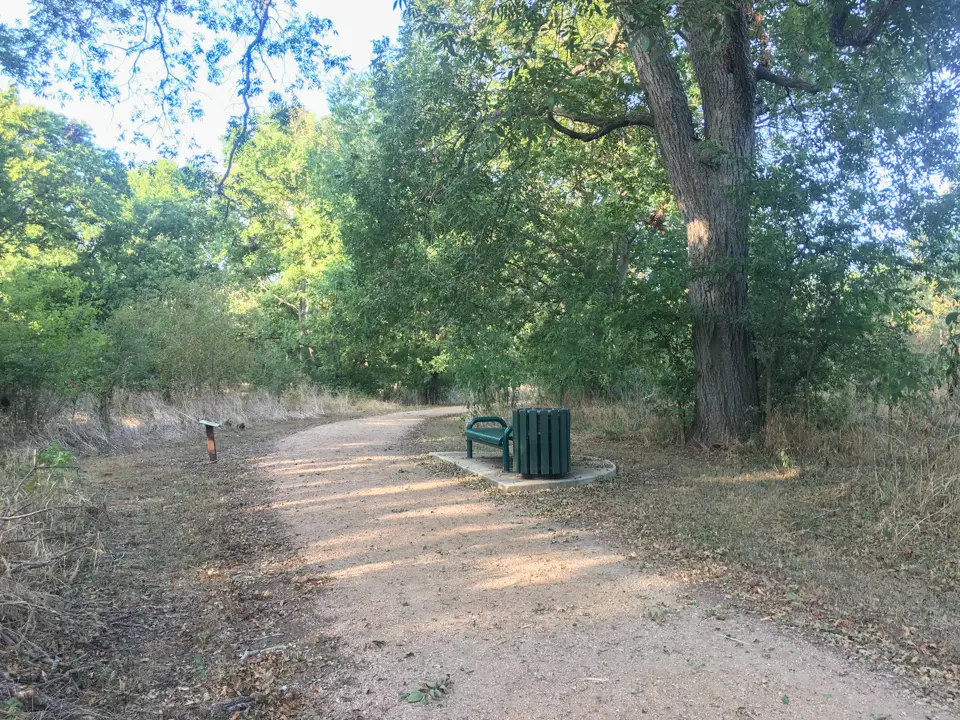
The Location
Before this was a park, the area was a small neighborhood with 6 residential streets. Huge back to back floods in 1997 and 1998 devastated the properties, and the area was deemed unsuitable for housing. Bexar County gained ownership of the property, and in partnership with the city of Schertz, established the park that we see today.
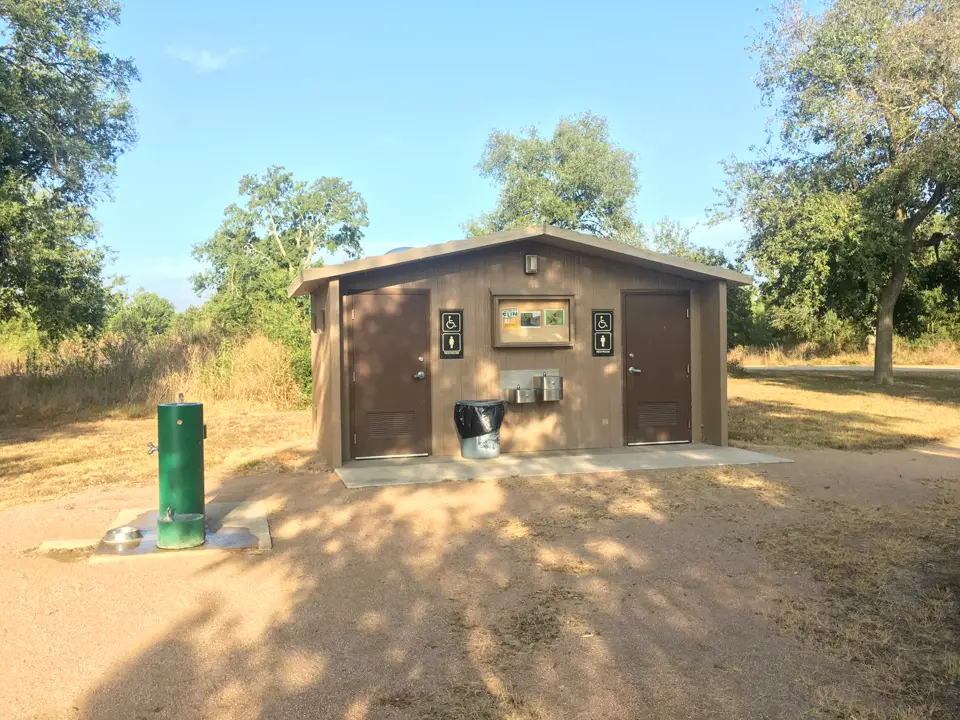
In 2013 a local Girl Scout troop established the first bird blind, which has since been improved upon. A second blind was added a few years later. Both bird blinds include several seed feeders, ground water stations with drips, and a hummingbird feeder.
Today you can walk along the remnants of the old residential streets that are kept mowed and clear. There is also a gravel hiking trail that makes a loop within the park boundary. The rest of the park as completely been reclaimed by nature, and is a quiet retreat for San Antonio residents and birders looking for a short break from the urban sprawl.
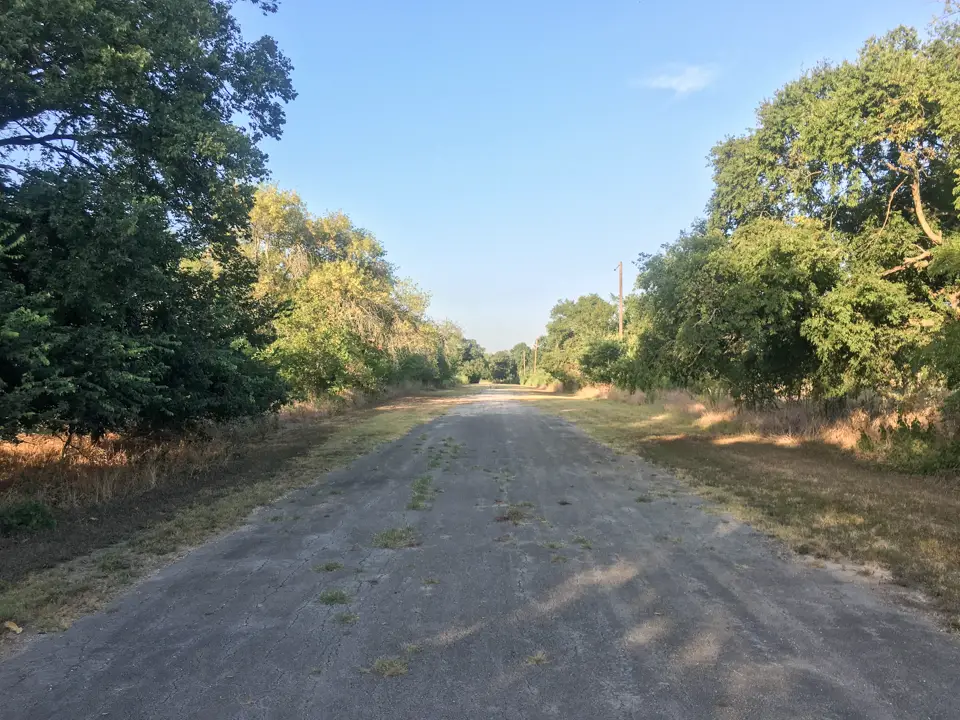
Birding Recommendations
Once you park your vehicle at the main lot by the restrooms, head over to either bird blind and sit for a few minutes. The feeders are refilled often, but still might be empty. The level of bird activity usually depends on how much food is still left. When you’re satisfied with the first blind, head to the second blind on the opposite side of the parking lot and restrooms and see what’s happening there.
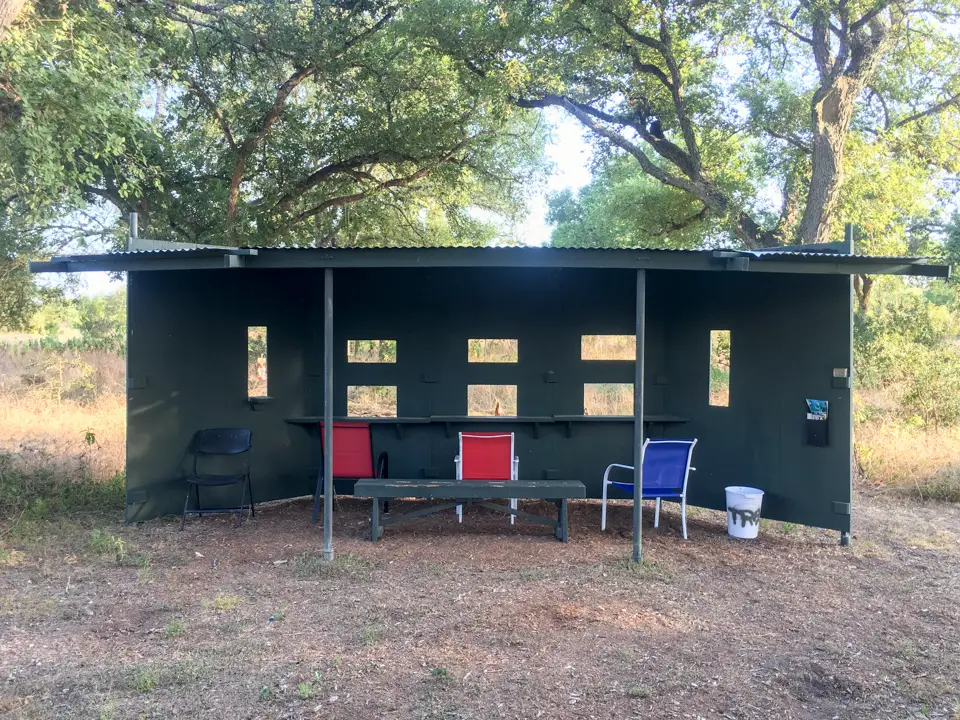
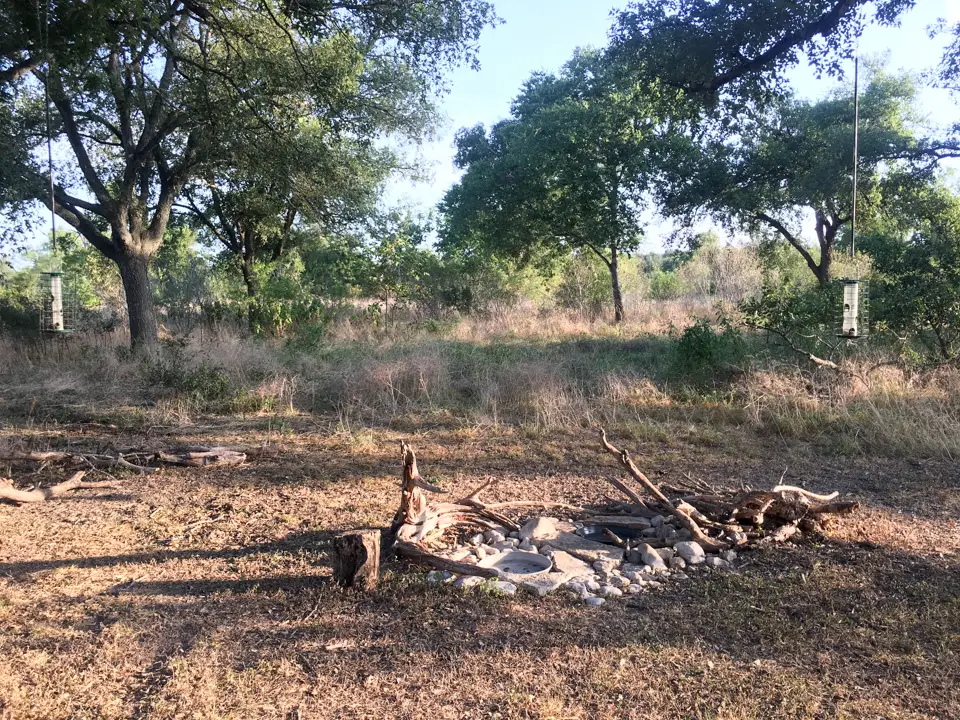
The southern blind has a larger and more visible tree canopy overhead, so be sure to lift your eyes up from the ground features often and see what’s moving through the branches above you. It’s possible to get a warbler or two during migration.
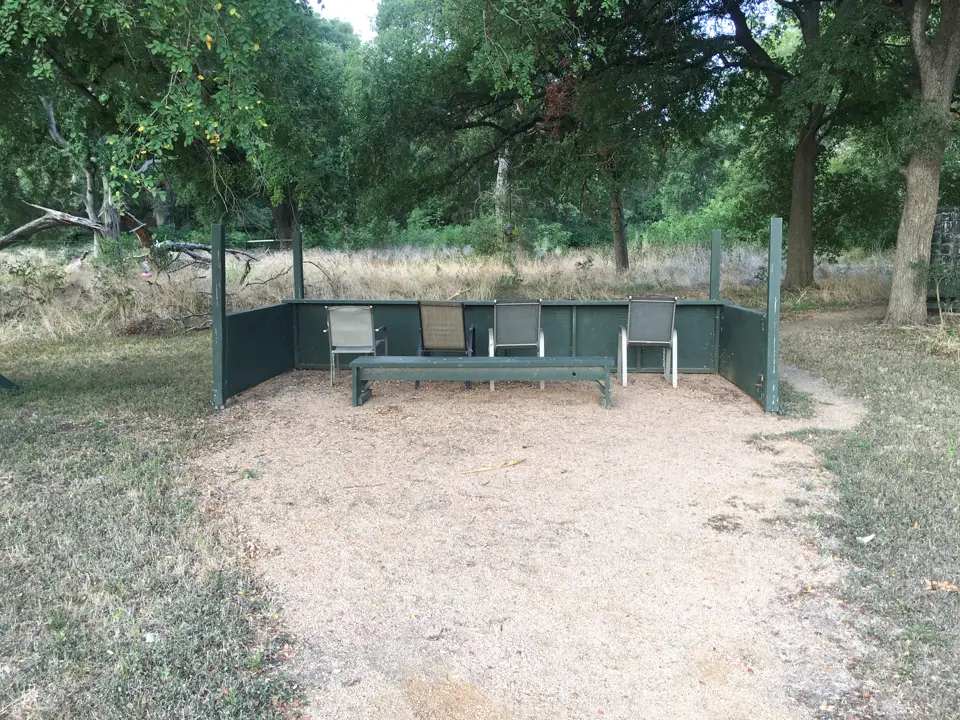
After visiting the bird blinds, hit the gravel trail and bird you way around it. If you arrive early enough there’s a good chance for a calling Barred Owl in the tall Elm and Pecan trees that dominate the south end of the park. Red-shouldered Hawk is also common here.
As you continue along the trail you’ll cross the first old residential street (Lyndon Drive). This is a shortcut back to the parking lot if you need it. By now you may have multiple Golden-fronted Woodpeckers, plus maybe a Ladder-backed, and a Norther Flicker if it’s winter. White-winged Doves will be flying over by the dozen. Flyover Herons and Egrets are also somewhat common due to the nearby creek.
As you walk be sure to check trees surrounding you and the numerous dead snags. These can be great perching spots and it’s always a surprise what birds will be on them. Double check anything that looks like a Great-crested Flycatcher, as Brown-crested Flycatcher is possible here too.
As you complete the nearly mile and a half loop, walk over to the main road where the entrance sign is. Step over the cable fence and walk the short distance down the road to the creek. On the left side will be an easy access point. Check the creek here for herons, kingfishers, and Spotted Sandpiper. There’s almost always something here, either along the water itself or in the bushes growing along the creek.
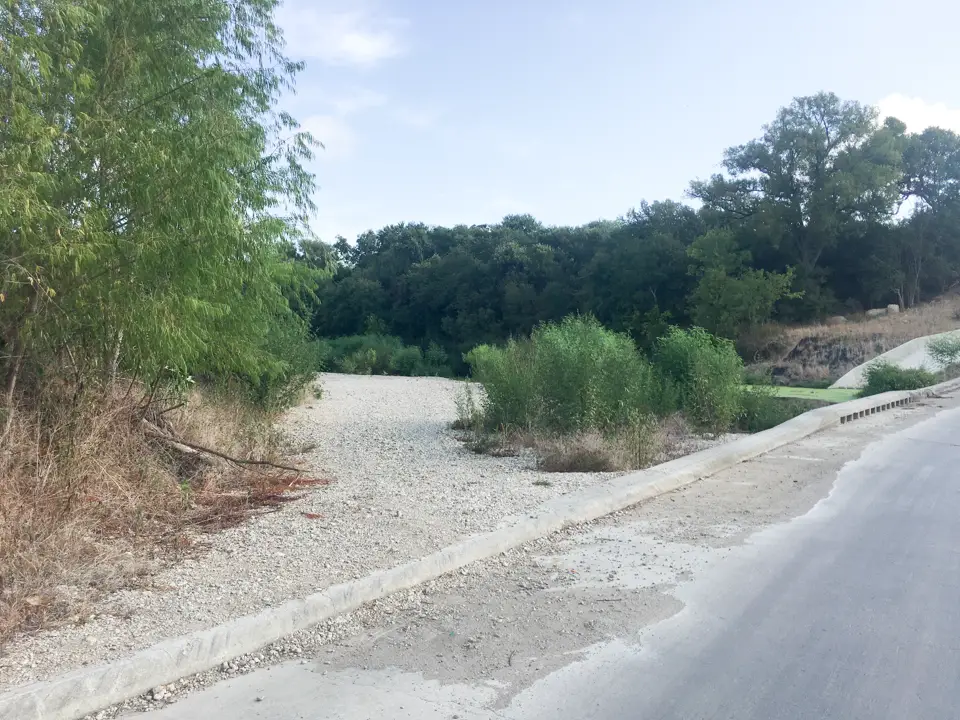
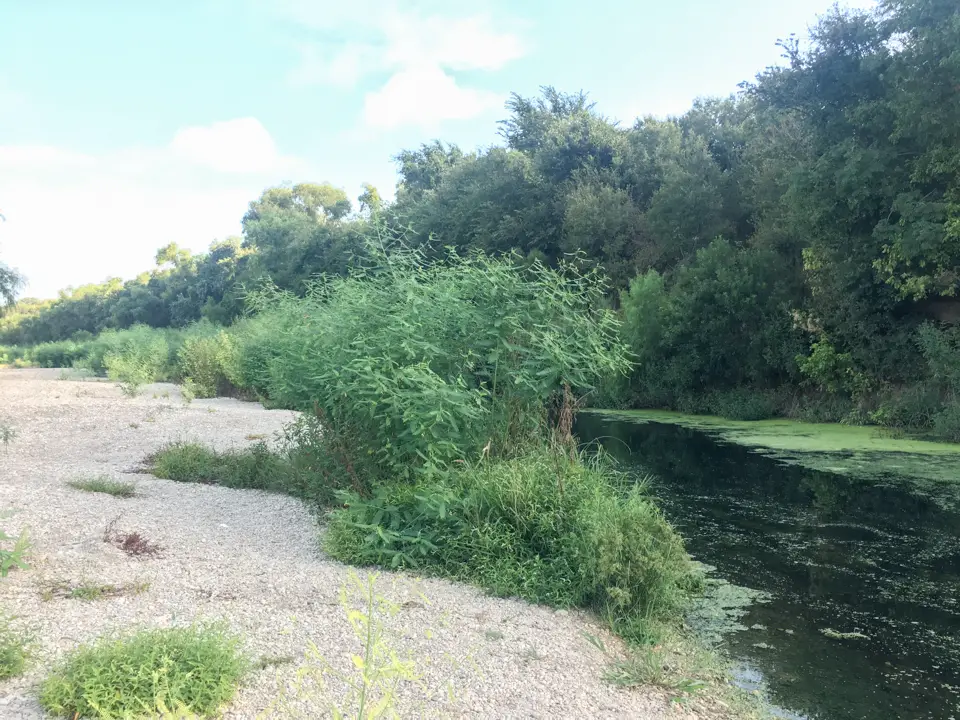
This should get you a good hour and a half of birding, maybe more. To shave time off, just do the southern portion of the gravel trail where the really tall pecans are, and cut back to the restrooms using Lyndon Drive. If you’re having a great time and want more birds, explore more of the old residential street paths.
Happy Birding!
Trail Map with Old Streets Marked
